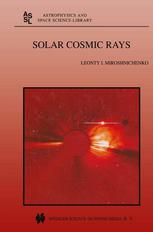

Most ebook files are in PDF format, so you can easily read them using various software such as Foxit Reader or directly on the Google Chrome browser.
Some ebook files are released by publishers in other formats such as .awz, .mobi, .epub, .fb2, etc. You may need to install specific software to read these formats on mobile/PC, such as Calibre.
Please read the tutorial at this link: https://ebookbell.com/faq
We offer FREE conversion to the popular formats you request; however, this may take some time. Therefore, right after payment, please email us, and we will try to provide the service as quickly as possible.
For some exceptional file formats or broken links (if any), please refrain from opening any disputes. Instead, email us first, and we will try to assist within a maximum of 6 hours.
EbookBell Team

4.4
42 reviewsIt turned out to be really a rare and happy occasion that we know exact1y when and how a new branch of space physics was born, namely, a physics of solar cosmic rays. It happened on February 28 and March 7, 1942 when the fIrst "cosmic ray bursts" were recorded on the Earth, and the Sun was unambiguously identifIed for the fIrst time as the source of high-velocity 10 particles with energies up to > 10 eV. Just due to such a high energy these relativistic particles have been called "solar cosmic rays" (SCR), in distinction from the "true" cosmic rays of galactic origin. Between 1942 and the beginning ofthe space era in 1957 only extremely high energy solar particle events could be occasionally recorded by cosmic ray ground-Ievel detectors and balloon borne sensors. Since then the detection techniques varied considerably and the study of SCR turned into essential part of solar and solar-terrestrial physics.